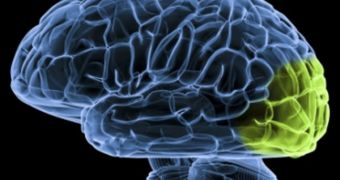A team of experts from MIT has provided conclusive evidence that indeed the brains of younger people can be more easily rewired that fully-developed, adult cortices. The evidence should finally settle a long-standing debate on the issue.
When researchers first demonstrated that areas of the brain involved in a particular function could be rewired to fulfill another function, the news sent shock waves through the international scientific community.
In those experiments, which were carried out some 10 years ago, scientists showed that portions of the visual cortex in blind patients rewired themselves to process tactile stimuli. Blind people need that in order to be able to read the Braille alphabet.
Subsequent investigations found similar processes at work in other areas of the human brain as well, and so researchers started wondering when the best time for rewiring is in our species.
Just recently, Beth Israel Deaconess Medical Center expert Alvaro Pascual-Leone and a team of neuroscientists from the Massachusetts Institute of Technology came up with a clear answer.
The group proved that rewiring takes place a lot more efficiently in younger brains. Details of their work were published in the October 14 issue of the esteemed medical journal Current Biology.
Experts say that the investigation could have significant practical applications, in the sense that understanding how the brain does its rewiring could help researchers develop ways of mimicking that process in the adult brain as well.
In the new study, the team looked at a portion of the brain called the middle temporal complex (MT/MST), in sighted, and congenitally blind test subjects, as well as in people who became blind later in life, after the age of 9.
This region of the brain was selected because it is one of the most researched cortical areas having to do with visual stimuli processing. The MT/MST underlies motion vision.
Using functional Magnetic Resonance Imaging (fMRI), lead paper author Marina Bedny, a postdoctoral associate at MIT, assistant professor Rebecca Saxe and Pascual-Leone analyzed the differences in how MT/MST responds to rewiring in each of these groups.
It was found that, in congenitally blind people, MT reacted to motion sounds, such as steps closing in. The same did not hold true for those who became blind later in life, or for test subjects that could see.
According to the team, the main conclusion that can be derived from this is that visual stimuli are directly responsible of guiding the MT area into developing its specialized, vision-related function.
Without these stimuli, as present in congenitally blind people, the brain area was taken over by the auditory cortex, which boosted its own ability to compensate for the loss of sight.
“We need to think of early life as a window of opportunity to shape how the brain works. That’s not to say that later experience can’t alter things, but it’s easier to get organized early on,” Bedny argues.
“The unresolved question is whether the brain can relearn, and how that learning differs in an adult brain versus a child’s brain,” the expert concludes.

 14 DAY TRIAL //
14 DAY TRIAL //